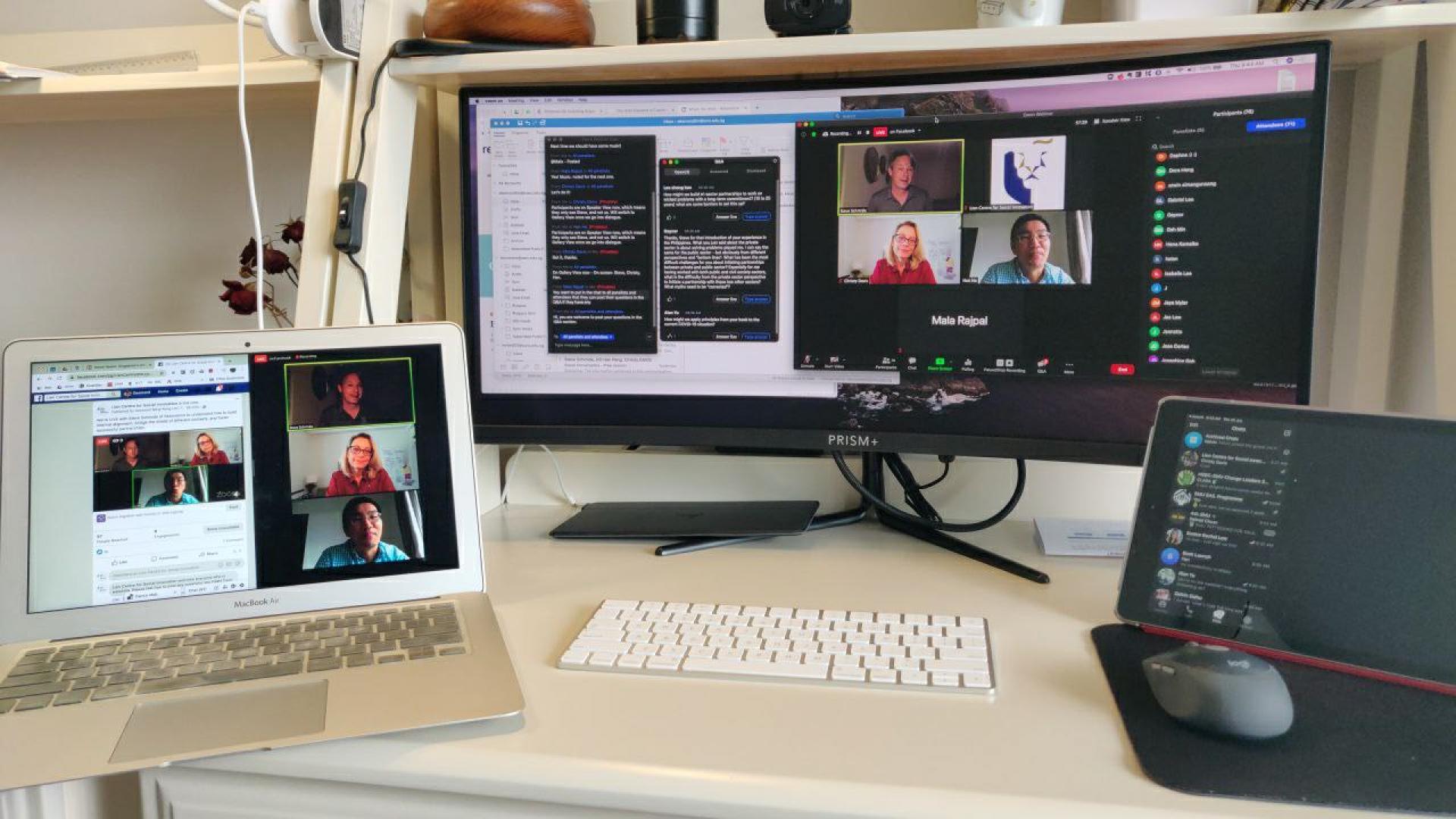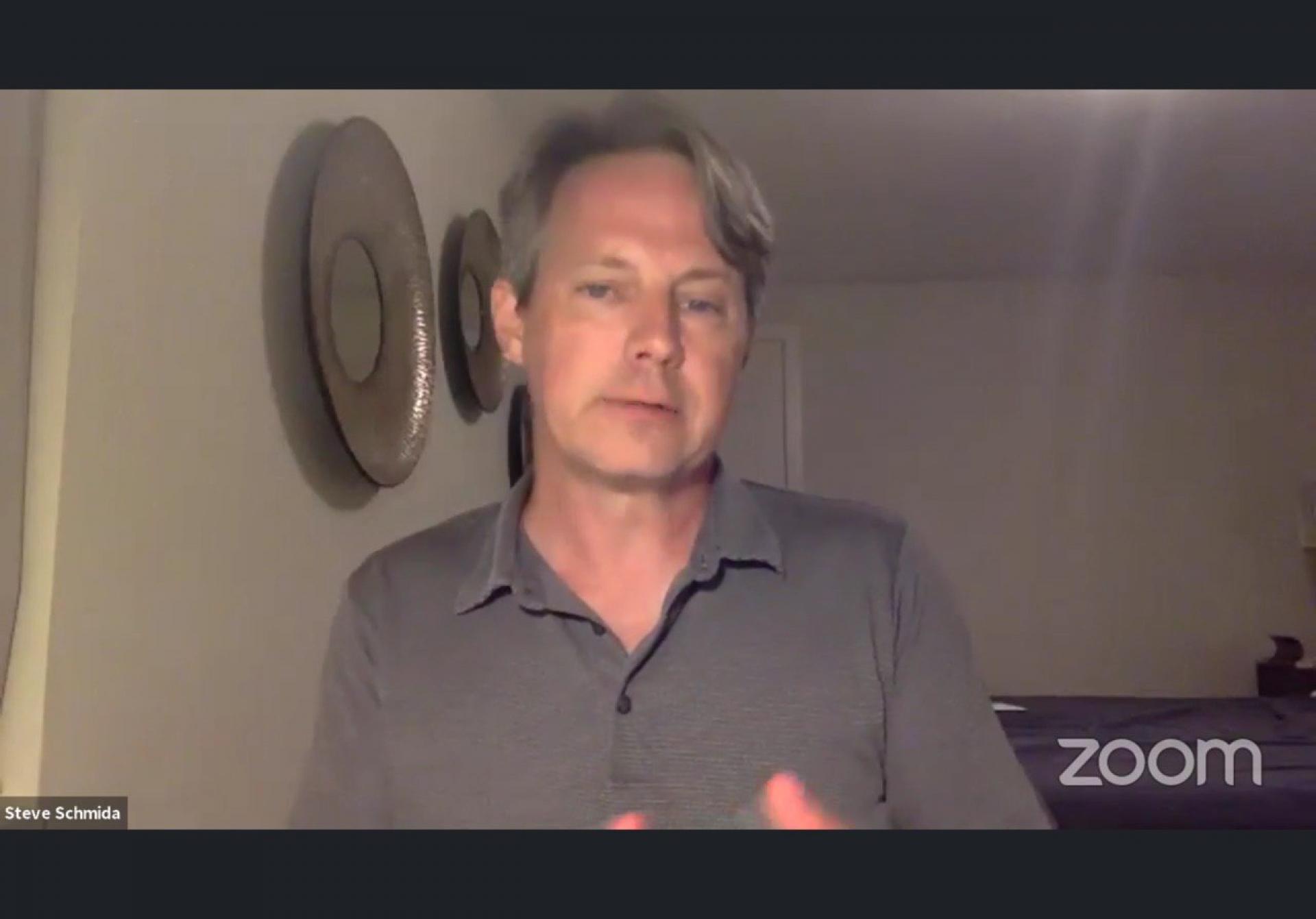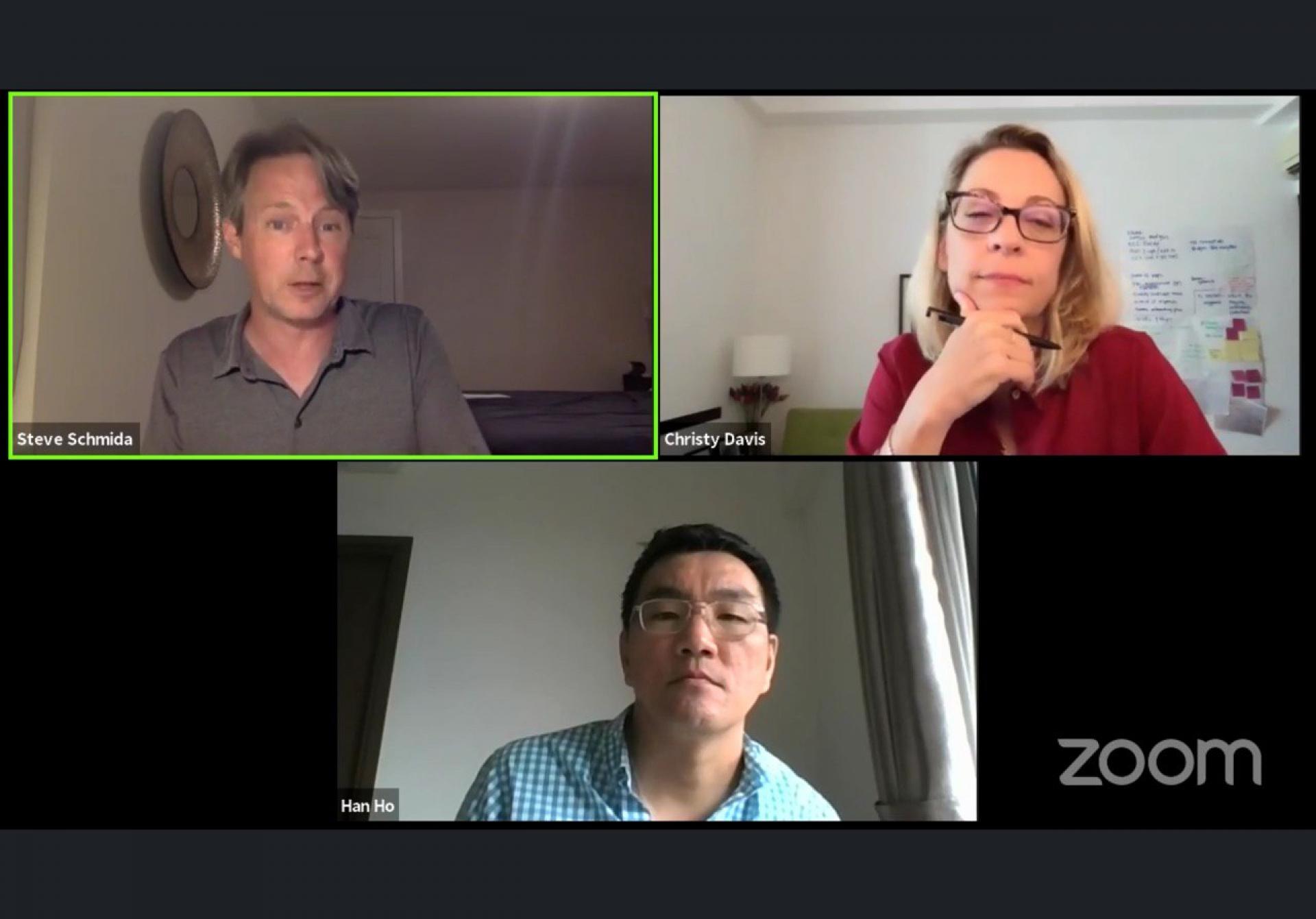Social Conversations: Webinar with Steve Schmida on Partnering with Purpose
Monday Jun 29,2020 | From Our Office

By Hana Kameike
On 25 June 2020, the Lien Centre for Social Innovation hosted its first virtual #SocialConversations session with Steve Schmida, the co-founder and Chief Innovation Officer of Resonance. To celebrate the launch of his book, Partner with Purpose: Solving 21st-Century Problems through Cross-Sector Collaboration, Steve talked about his professional experience with building partnerships, and the significance of cross-sector collaboration during the COVID-19 pandemic. More than 70 participants from Singapore and overseas tuned in to this webinar, conducted over Zoom and Facebook Live.
After a warm welcome by LCSI's Executive Director Christy Davis and Assistant Director Ho Han Peng, Schmida described how he got into corporate sustainability consulting. As a Russian Literature undergraduate during the collapse of the Soviet Union, he recognised the importance of partnerships for economic development across sectors. He found that products and services—“vision[s] without a plan”—became possible “if we take some of the tools of development [of the public sector] and combine it with the know-how of the corporate sector.” From then, Steve continued to explore innovative forms of partner collaborations through his education at the Fletcher School of Law and Diplomacy, followed by his consulting work for the Eurasia Foundation. In 2005, he founded his consulting firm, Resonance, primarily working with international donor agencies and corporations.

Steve brought up a partnership project between Microsoft and USAID, as an example illustrating the growth and impact possible when the private and public sectors combine forces. As part of their TV White Space initiative, Microsoft had signed a partnership agreement with USAID and the Philippines government to connect rural Filipino fisheries. That same year, however, the Bohol earthquake and Super Typhoon Yolanda devastated the area and its existing communication channels. While these natural disasters made the partnership particularly difficult to implement, it also showed the need for network connectivity in these remote areas—and consequently, the demand for Microsoft’s TV white space technology. He explained that this partnership was fruitful because both partners stood to provide and gain valuable services: the Aquino government adopted Microsoft’s technology and fulfilled USAID’s fishery registration initiative. The success of this partnership was recognised globally when it received the P3 Impact Award in 2015.
This real-life example was used as a springboard to discuss how trust and alignment can be established in cross-sector partnerships. Steve explained that partners should focus on simple and inclusive responsibilities in order to reach effective yet manageable outcomes. This led to a chat about internal alignment in a partnership. He pointed out that a mutual understanding of partners’ goals does not necessarily indicate a mutual understanding of said goals between individuals of each partner establishment. In other words, for a partnership to work well, individuals must extend empathy to the individuals they work directly with—even if they do not personally agree with their corporate goals. This is because internal alignment is based on the performance and health of the partner relationship, not only at the management level but also at an individual level.

Steve next touched on the importance of reflecting on the capabilities and goals of one’s institution in order to determine potential partners and build "good" partnerships. He laid out a simplified step-by-step reflection process:
- What is the problem to solve? Business management, sustainability, social involvement, and funding are common problems faced by the public and private sectors.
- Is the problem(s) simple, complicated or wicked? Simple problems can be tackled without partners, but complicated and wicked problems usually require communication and collaboration across organisations.
- What are the assets your company/organisation can bring to the table? This is arguably the most important step, as it brings awareness to what an organisation has to offer and what they seek from potential partners.
This led to a final discussion relating to cross-sector partnerships within the COVID-19 context. Steve recognised that partnerships could improve (and have improved) the acquisition speed and quality for supplies and services. He shifted the focus, however, to the value of partnerships for post-COVID-19 social reform. Given the drastic sociocultural shifts required to combat a global pandemic, it is difficult to imagine societies completely returning to the pre-COVID-19 "normal". He stated that while partnerships are not a “panacea”, they can solve many problems—particularly if they involve public goods and services.

The virtual dialogue concluded on a hopeful note, as Steve, Christy, and Han shared their thoughts about the value of cross-sector partnerships in the face of global challenges such as climate change and COVID-19. Steve hopes that his new book, which he described as “a how-to guide … but [told] through the stories of business professionals and accessible to a general audience", will foster more joint initiatives between businesses and organisations as the economy slowly picks up again.
More about Steve and his work can be found here.
| Hana Kameike studied philosophy at Yale-NUS College and was an editorial summer associate for the Lien Centre for Social Innovation's Summer Associates Programme in 2020. Having grown up in Japan, she is passionate about the development of end-of-life care in Asia. Connect with Hana on LinkedIn. |